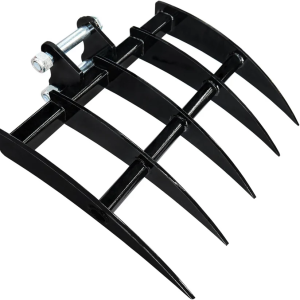For as long as humanity has existed, expression has taken many forms. In ancient times, it appeared through carvings, scriptures, and sacred garments. Today, it manifests in what we wear, the music we listen to, and how we present ourselves to the world. Beneath every layer of fabric or fashion trend lies an old truth — people have always sought ways to be seen, understood, and remembered.
The ancient world used symbolism to communicate values, faith, and belonging. From priestly robes to royal attire, clothing was rarely just fabric; it was message and identity. Thousands of years later, the same instinct guides modern culture, though our mediums have changed. The desire to be recognized and to define oneself remains timeless.
Garments of Meaning: Clothing as Communication
In biblical texts, clothing was more than necessity — it was narrative. The robe of Joseph symbolized favor; the sackcloth represented mourning; the garments of priests reflected sanctity and purpose. These layers told stories without words.
Today, when someone walks through London in a designer hoodie or a minimalist outfit, that too tells a story. It may not carry divine instruction, but it expresses belief — not always in religion, but in self, culture, or community.
Modern apparel, especially within urban movements, functions as a form of declaration. It’s the language of identity written in fabric. Whether one belongs to a certain neighborhood, creative circle, or generation, their clothing speaks before they do.
The Cultural Echo of Ancient Identity
The same human impulse that led ancient people to weave symbols into garments is what drives today’s youth to adopt street culture, logos, and limited-edition apparel. The expression may have evolved, but the foundation remains spiritual: a search for meaning, belonging, and recognition.
In the modern age, where digital identity often overshadows the physical, the clothes we wear are one of the last tangible forms of real-world individuality. What ancient garments did for tribes and temples, today’s apparel does for urban communities. It becomes both shield and signal.
Faith in Fabric: The Rise of Symbolic Clothing
The Bible describes garments of praise and robes of righteousness — outward reflections of inward faith. In a secular sense, this idea persists. Many people choose what they wear not simply for style, but for what it represents.
A Corteiz outfit, for instance, carries more than street style; it embodies community, self-belief, and the idea that confidence is earned, not given. To those who wear it, it’s not just tracksuit or some other item — it’s identity stitched in modern form.
Just as sacred garments once differentiated the devoted from the ordinary, today’s cultural pieces separate the conformists from the creators. The difference lies not in cloth, but in conviction.
Modern Symbols and the Spiritual Core of Style
Look closely at modern youth culture and you’ll find deep echoes of ancient rituals. The way people gather for new fashion drops, queue overnight for releases, or share limited collections mirrors the communal excitement once reserved for ceremonies or festivals.
At its heart, this isn’t about vanity — it’s about participation. Clothing gives us a visible way to belong to something greater than ourselves. It’s modern worship in a secular temple: a faith not in gods of stone, but in human creativity and shared experience.
Through this lens, fashion becomes a new theology — one written in color, texture, and movement rather than parchment and ink.
The Human Desire to Be Remembered
In both scripture and modern life, humans wrestle with the same question: Who am I, and how will the world remember me? For ancient, the answer came through faith and divine calling. For the modern individual, it often comes through personal expression — through art, through words, or through what they wear.
The symbols may change, but the longing does not. Every time someone chooses a garment that represents courage, defiance, or pride, they echo a very old impulse — the wish to be seen not as ordinary, but as purposeful.
When an individual puts on something like a Corteiz clothing, it’s more than choosing an outfit. It’s a declaration of belonging, resilience, and creative self-belief. It’s a continuation of humanity’s oldest form of prayer — the prayer to be understood.
Bridging the Ancient and the Modern
The biblical Leviathan symbolizes power beneath the surface — something untamed yet purposeful. In a metaphorical sense, today’s style culture channels a similar energy. Beneath the surface of trend and fabric lies a deeper message: strength, confidence, and self-realization.
Every generation finds its own symbols. For some, it’s a cross or a scripture. For others, it’s a piece of clothing that carries the same weight of meaning in a different language. In both cases, the message is the same — to show what cannot be spoken and to connect with others who understand.
A Culture of Purpose
The story of clothing is ultimately the story of humanity itself — evolving, expressive, and endlessly seeking meaning. From biblical robes to contemporary street fashion, each era has woven its beliefs into fabric.
As modern brands grow and movements rise, the essence of what we wear circles back to the oldest truth: people dress not merely to cover their bodies, but to communicate their souls. Style, like scripture, is a reflection of what one holds sacred — whether it’s faith, freedom, or individuality.
From the garments of big names to the urban designs of today, the purpose of clothing has never truly changed. It remains our way of translating inner conviction into visible form. Every color, texture, and symbol speaks a silent truth about who we are and where we come from.







